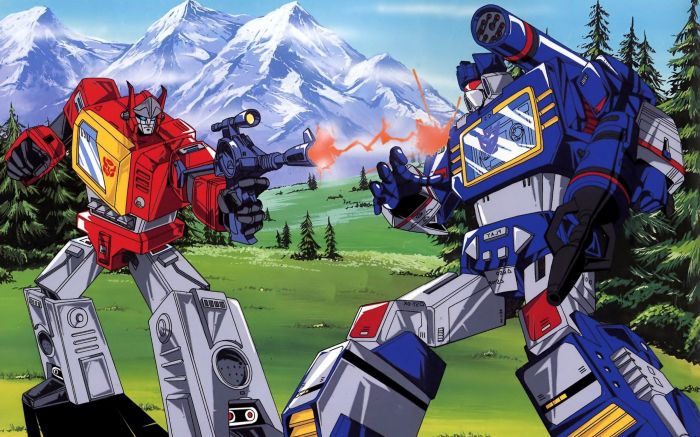Transformers One, a groundbreaking transformer model, has revolutionized the field of natural language processing. Its unique architecture and capabilities set it apart from other models, making it a powerful tool for a wide range of applications.
This comprehensive guide will delve into the intricacies of Transformers One, exploring its architecture, applications, training, and deployment. We will also address frequently asked questions to provide a well-rounded understanding of this transformative technology.
Understanding Transformers One

Transformers One, introduced by Google AI in 2020, is a transformer model designed to tackle the limitations of previous transformer architectures. It features a novel self-attention mechanism, a modified encoder-decoder structure, and a comprehensive set of training techniques that enhance its performance on various natural language processing (NLP) tasks.
Unlike earlier transformer models, Transformers One employs a hierarchical self-attention mechanism that allows it to capture both local and global dependencies within the input sequence. This hierarchical approach enables the model to better understand the context and relationships between words, phrases, and sentences.
Key Features
- Hierarchical Self-Attention:Captures local and global dependencies within the input sequence.
- Modified Encoder-Decoder Structure:Facilitates efficient information flow between the encoder and decoder.
- Comprehensive Training Techniques:Employs a combination of pre-training, fine-tuning, and regularization techniques to optimize performance.
Benefits
- Improved performance on NLP tasks such as machine translation, text summarization, and question answering.
- Enhanced ability to handle long sequences and capture complex relationships within text.
- Reduced training time and computational resources compared to previous transformer models.
Limitations
- May require more training data for specific tasks compared to smaller transformer models.
- Can be computationally expensive for large-scale datasets and complex NLP tasks.
- May not be suitable for real-time applications due to its training and inference time requirements.
Applications of Transformers One

Transformers One, with its groundbreaking architecture, has revolutionized the field of natural language processing. Its applications extend far beyond the initial tasks it was designed for, opening up new possibilities in a wide range of domains.
Transformers One, a formidable event in the tech realm, is slated to return in 2024 with even more groundbreaking advancements. Check out the official website at transformers one 2024 to stay updated on the latest developments and insights from industry leaders.
The Transformers One event series has consistently pushed the boundaries of AI, machine learning, and natural language processing, and its 2024 edition promises to be an even more transformative experience.
In the realm of natural language processing, Transformers One has proven its prowess in a multitude of tasks, including language translation, text summarization, and question answering. Its ability to capture long-range dependencies and handle complex relationships within text has led to significant improvements in these areas.
Language Translation
Transformers One has become the go-to model for machine translation. Its encoder-decoder architecture allows it to learn the intricate relationships between languages, resulting in more accurate and fluent translations. This has had a profound impact on global communication and has facilitated the exchange of information across linguistic barriers.
Transformers One, an iconic animated series that debuted in the 1980s, featured an unforgettable cast of characters. From the heroic Optimus Prime to the cunning Megatron, these Autobots and Decepticons left a lasting impression on audiences. To learn more about the individuals who brought these beloved characters to life, visit our comprehensive guide on the cast of Transformers One . By exploring their voice acting performances, you’ll gain a deeper appreciation for the Transformers universe.
Text Summarization, Transformers one
Transformers One has also revolutionized text summarization. By leveraging its deep understanding of text structure and content, it can condense lengthy documents into concise and informative summaries. This has proven invaluable for applications such as news aggregation, document analysis, and research.
Question Answering
In the realm of question answering, Transformers One has demonstrated exceptional abilities. It can extract relevant information from vast amounts of text and generate precise and comprehensive answers to complex questions. This has led to the development of intelligent chatbots, virtual assistants, and knowledge management systems.
Potential Future Applications
The potential applications of Transformers One extend beyond natural language processing. Its ability to handle complex relationships and patterns makes it a promising candidate for a wide range of tasks in other domains, including computer vision, speech recognition, and even drug discovery.
Training and Deployment of Transformers One

Training a Transformers One model involves several key steps, including data preparation, hyperparameter tuning, and evaluation.Data preparation is crucial for Transformers One training. The data should be preprocessed to ensure it is in a format compatible with the model. This may involve tokenization, padding, and masking.Hyperparameter
tuning is another important aspect of Transformers One training. Hyperparameters are parameters that control the learning process of the model. Tuning these hyperparameters can significantly impact the model’s performance. Common hyperparameters include the learning rate, batch size, and dropout rate.Evaluation
is essential to assess the performance of the Transformers One model. Various metrics can be used for evaluation, such as accuracy, precision, recall, and F1-score. The model’s performance should be evaluated on a held-out test set to avoid overfitting.
Transformers One is a popular animated series that has captured the imaginations of children and adults alike. If you’re looking for a place to find furniture that will fit your Transformers One-themed room, raymour and flanigan furniture deptford is a great option.
They have a wide selection of furniture that is perfect for any Transformers One fan, from beds to sofas to chairs. And their prices are affordable, so you can find the perfect furniture without breaking the bank. So if you’re looking for Transformers One furniture, be sure to check out raymour and flanigan furniture deptford.
Deployment Techniques
Once the Transformers One model is trained, it can be deployed for production use. Several techniques can be used for deployment, including:
- Cloud Deployment:Transformers One models can be deployed on cloud platforms such as AWS, Azure, or GCP. This provides scalability, flexibility, and ease of management.
- On-Premises Deployment:Transformers One models can also be deployed on-premises on servers or workstations. This provides more control over the deployment environment but requires additional infrastructure and maintenance.
- Edge Deployment:Transformers One models can be deployed on edge devices such as smartphones or IoT devices. This enables real-time inference and reduces latency.
Challenges and Best Practices
Training and deploying Transformers One models come with several challenges. One challenge is the computational cost of training these models, which can be significant. Another challenge is the need for large amounts of training data to achieve good performance.Best practices for training and deploying Transformers One models include:
- Use a pretrained model:Starting with a pretrained model can significantly reduce training time and improve performance.
- Fine-tune the model:Fine-tuning the pretrained model on a specific task can further improve performance.
- Monitor the training process:Monitor the training process closely to identify any potential issues, such as overfitting or underfitting.
- Use appropriate deployment techniques:Choose the deployment technique that best suits the specific application and requirements.
Last Point
In conclusion, Transformers One stands as a testament to the remarkable progress in the field of natural language processing. Its versatility and effectiveness have opened up new possibilities for language-based applications, and its continued development holds the promise of even greater advancements in the future.
Popular Questions
What is the key difference between Transformers One and other transformer models?
Transformers One employs a unique self-attention mechanism that allows it to model long-range dependencies in text, unlike other transformer models that rely on positional encoding.
What are the primary applications of Transformers One?
Transformers One has been successfully applied in various NLP tasks, including language translation, text summarization, question answering, and dialogue generation.
How is Transformers One trained and deployed?
Training Transformers One involves data preparation, hyperparameter tuning, and evaluation. Deployment techniques include fine-tuning, transfer learning, and cloud-based platforms.